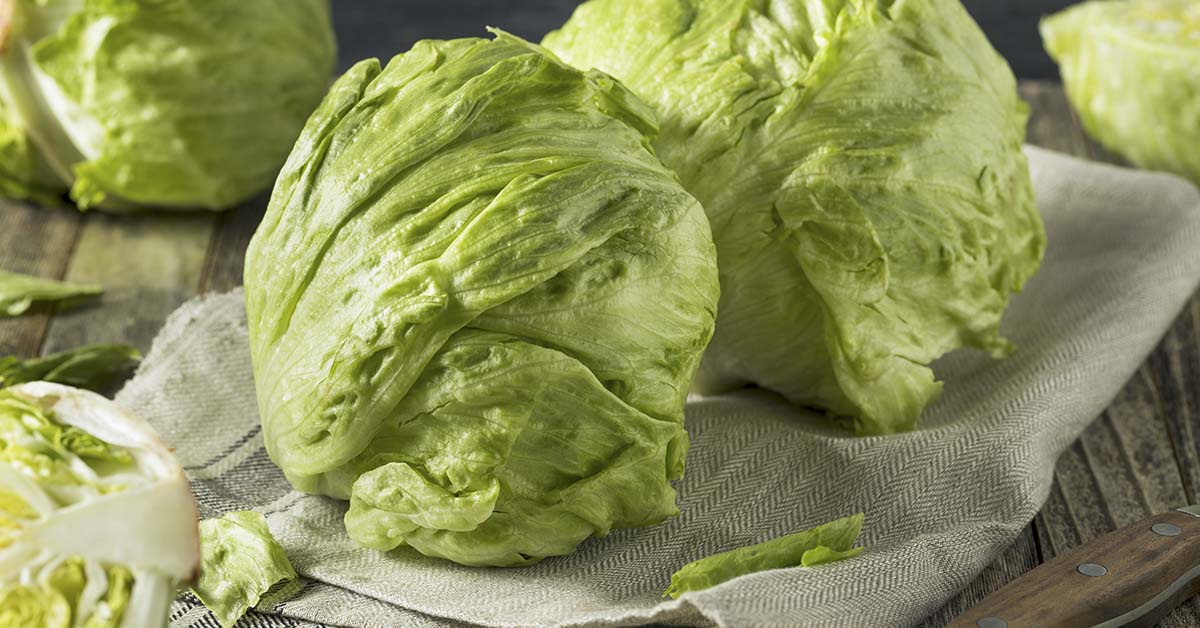Have you ever noticed a reddish-brown discoloration on your lettuce? Or worse, have you ever panicked and thrown away perfectly good greens because you thought they had gone bad? Fear not, that red stuff on lettuce is actually a harmless condition known as rusty lettuce.
What Is Rusty Lettuce?
So what is rusty lettuce, exactly? This refers to when your lettuce, most often closer to the root, starts to turn a red, rusty color. Its cause is a rather simple explanation. Essentially, it’s a chemical reaction that occurs when the iron in the soil mixes with the flavonoids (pigment molecules) in the lettuce. This reaction causes the pigment molecules to turn brownish-red, giving the lettuce a “rusty” appearance. (1, 2)
Despite its unsightly appearance, rusty lettuce is perfectly safe to eat. It won’t affect the taste or nutritional value of the lettuce, and it’s not a sign that the lettuce has gone bad. In fact, many types of lettuce, particularly red leaf, naturally contain high levels of flavonoids, making them more susceptible to “rusting.”
Read: I Just Learned That Raw Oysters Are Still Alive When You Eat Them
Why Does This Happen?
But why does lettuce rust in the first place? Well, there are a few factors that can contribute to this phenomenon. One of the main culprits is moisture. When lettuce is exposed to excess moisture, it can speed up the oxidation process. This causes the flavonoids to break down more quickly, and then the above reaction occurs, turning your lettuce red. High humidity levels can also contribute to the rusting of lettuce, as it creates the perfect environment for this reaction to occur.
How To Prevent Rusty Lettuce
Fortunately, there are ways to prevent lettuce from rusting. One simple solution is to keep your lettuce as dry as possible. After washing your lettuce, pat it dry with a paper towel or spin it in a salad spinner to remove any excess moisture. You can also store your lettuce in a sealed container with a paper towel to absorb any excess moisture. Whether you keep your lettuce in a container or a ziplock bag, lining it all around (or in the container’s sake, top and bottom) with paper towels does a great job at helping your lettuce last longer.
Another way to prevent rusty lettuce is to choose fresh, high-quality greens. Check the expiration date on the package and look for lettuce with vibrant green leaves free of brown spots or wilting. It’s also a good idea to store your lettuce in the refrigerator—one of the main causes of rusting is exposure to heat and light.
Rusty Lettuce Is Still Good Lettuce
Though rusty lettuce may not be the most appealing thing to look at, it’s still perfectly safe to eat. The red “rust” won’t affect the taste or nutritional value of your greens, either. Understanding what causes lettuce to rust and taking a few simple steps to prevent it can help ensure that your salads always look and taste their best. So go ahead and enjoy that rusty-looking lettuce.
Keep Reading: Is Gray Ground Beef Safe to Eat?
Sources
- “If You See Red Stuff on Your Lettuce, This Is What It Is.” RD. Melany Love.
- “Are The Rusty Spots On Lettuce Safe To Eat?” Delish. Gabby Romero. November 27, 2023.

